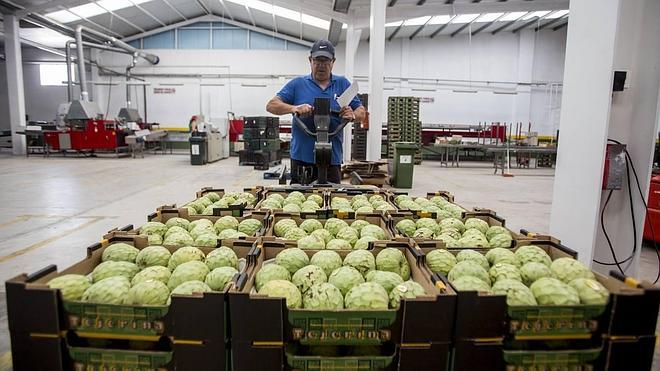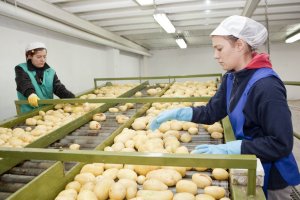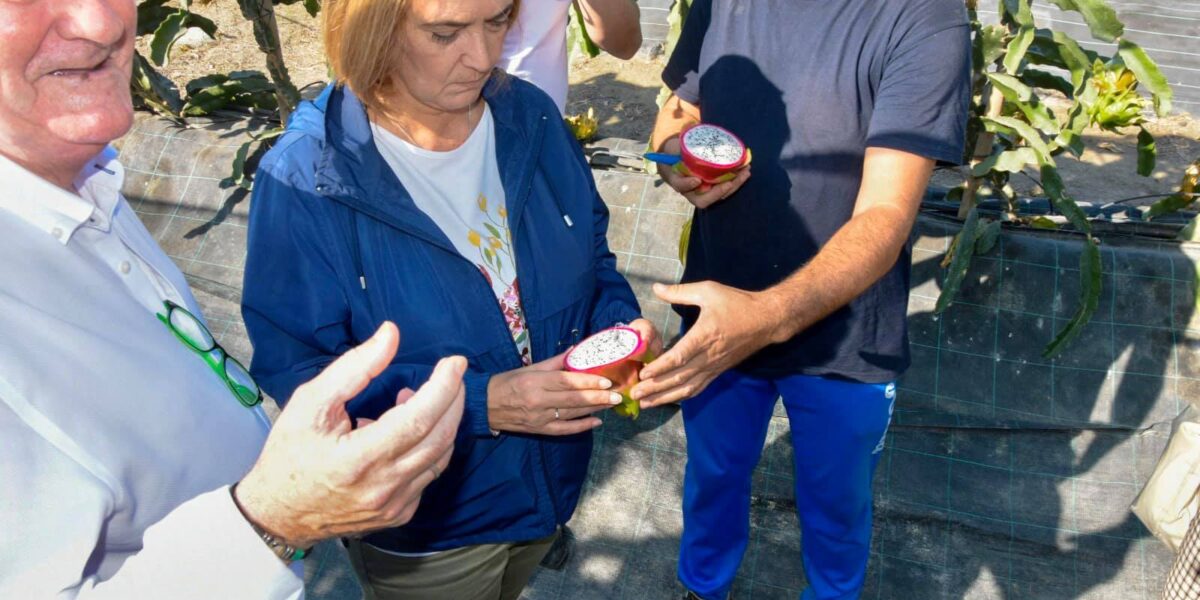Commercialization problems and high production costs are causing this fruit to lose ground on the Coast
If measured in commercial terms, a quarter of a century of stagnant sales is too long a period of time and the alarm bells are long overdue to go off in the custard apple sector of the Costa Tropical. And is that, at the start of a new campaign, the putting of the emblematic fruit in domestic markets comes accompanied by the usual problems: the little knowledge that still has the consumer, the untimely collection, prices and -as if that were not enough- the calamity suffered by farmers in the area of Almuñecar, as a result of the hail of 2013, which conditions the production itself for a period of time that goes far beyond the calendar year in which the damage occurred.
In this framework, come the reflections and warnings of technicians and researchers. “Commercialization does not advance collectively because there is no sector that sets general guidelines, as happens with the horticultural sector,” explains the head of the technical department of Caja Rural de Granada, Ignacio Escobar, for whom, despite the fact that the Association of subtropical producers of Malaga and Granada has recently been created, there is much to be done in this area.
In his view, it would be a good way out that, after the reduction of cultivation that is currently occurring in favor of avocado and mango, “born some significant group of producers with clear ideas of how they should properly commercialization and promotion of this fruit both in the domestic market and in Europe”. The reduction of the custard apple production area along the entire Granada Coast is already something so evident that it has been a fait accompli over the last decade. “The larger plantations are disappearing, the tree gives much more work than the avocado and the cherimoya is becoming concentrated in small family plots,” says Fernando Martin Callejon, manager of the marketing cooperative Procam of Motril.
Frustration
The custard apple production costs are higher due to the need for labor that is not compensated by the prices of the product, so this is being reclassified in farms managed by family units. Martín also insists on what the whole sector openly recognizes, although it is not said out loud. “Production is stagnant. Custard apple is a very perishable product and complicated to work in warehouses and commercialization”, to which must be added its exclusively national consumption and not throughout the country.
These problems are being endorsed as soon as the whole sector is consulted. “This fruit has very little ‘travel’ for its characteristics and is exported very little, since most are eaten in Spain being a large percentage in Andalusia and Madrid,” say those responsible for the company Mercomotril.
The general frustration is multiplied as a consequence of the efforts implemented to the sector for years. In terms of cultivation, pruning, pollination, post-harvest, pests, variety selection, etc., both the Finca la Mayora, of the Centro Superior de Investigaciones Científicas de Algarrobo-Costa (Málaga) and the Finca La Nacla of Caja Rural de Granada, in Motril, have used economic and human resources for experimentation and dissemination for more than five years. “This means that there are few secrets in its management for the farmer of our coast who wants to take this crop seriously in a professional manner,” says the technical manager, Ignacio Escobar.
Reduced production
But the truth is that the economic, cultural and even emotional consequences continue to weigh heavily on a sector that does not have it all its own way.
In fact, even last year’s weather conditions are going to greatly affect the production of the most important tropical growing area of the coast, Almuñécar. According to Antonio Sanchez, manager of the firm Frutas El Romeral and president of the Regulatory Council of the Denomination of Origin of the Custard Apple of Malaga-Granada, it is a fact that in this campaign there will be a significant decline in terms of kilos of production due to the effects of the terrible hailstorm of a year ago.
“The plants suffer the damage for two years. In Almuñécar they were very affected, the flowering was greatly affected and the loss can be up to 50%”, Sánchez explains. Translated into numbers, we would be talking about a production of between 40 and 50 million kilos of cherimoya, already in the winter of 2015. Yes, less production but with an exceptional quality. And that quality will be a distinctive feature of the campaign that has now begun.




